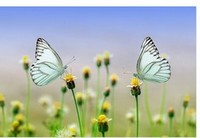|
I had sent an e-mail out to our biologists about what happened here. I gave them the background on Polly and adults and told what had transpired so far . I told them about here injury and then just staying with adults. I told them about her coming in while they were on eggs and sometimes there being a stand off. I told them about here coming in when first 2 were born and just nudging them and then leaving and then I told what happened the other day.
One of the biologists was going to e-ail his falcon friend David Bird.
another gave me the O.K. to post his reply
Hi, Bev, et al.,
Every Peregrine webcam will show us something interesting. Occasionally the webcam events are extremely revealing about the plasticity and the limitations of the falcons' behavior.
I hope somebody keeps careful track of what transpires and writes up the events from the Montreal nest. This appears to be a well-documented, well-observed event.
From Bev's descriptions only (I've not been watching the website), I can offer a few comments.
I've watched as a male of a pair of captive breeding Merlins temporarily 'stole' some of the brood from under the female and brooded them a few cm away from the female. The drive to incubate or brood can be very strong!
With their beaks, raptors can pick up and carry tiny nestlings without damaging them.
Sometimes in (captive) circumstances in which the female apparently was confused, she may pick up and carry a nestling, then brood it, then pick it up again... In one case I've watched, everything was fine a hour later, and the nestling eventually was reared to fledging; in another case, an hour later the nestling was found dead, cached in a corner of the nest box, and the female was incubating the remaining (infertile) eggs.
In the literature there are a small number of cases of "threesomes" at falcon eyries, usually with a yearling (usually female) helping the adult breeding pair (apparently not always their own offspring of the previous year).
Observations have not clearly shown how these unusual situations arise.
Even when there were many high quality territories vacant, yearling Peregrines rarely took up those territories and tried to nest as one year olds.
Presumably the few that tried were especially high quality birds. The 'extra'
bird at the Montreal nest probably is not an exceptionally high quality, well nourished yearling, and so she may not be in 'full breeding condition'.
In captivity there have been a few observations in which some much older nestlings have been seen to feed much younger ones; in large nestlings or fledglings there appears to be a powerful instinctual urge to feed begging young falcons (but those were not tiny, recently hatched nestlings). As the spring progresses, perhaps Polly will become more 'maternal' and may properly
take on some parenting roles.
In Montreal, if the fledgling of the previous year had a leg injury, it is understandable that the parents might have cared for it as a dependent youngster into the fall and winter, and that it did not learn how to kill quarry and disperse when it normally would have. And if the adults remained on territory through the winter, it is understandable that the juvenile might become an accepted part of the "pair" and still be there in the spring. But, while we might like her to, we cannot expect the young bird to do the appropriate parenting behaviors. It may work out. Or it may not. I hope somebody watches closely and tells us what eventually happens.
Wayne
_________________
each day is full of endless possibilities (bev)

|



